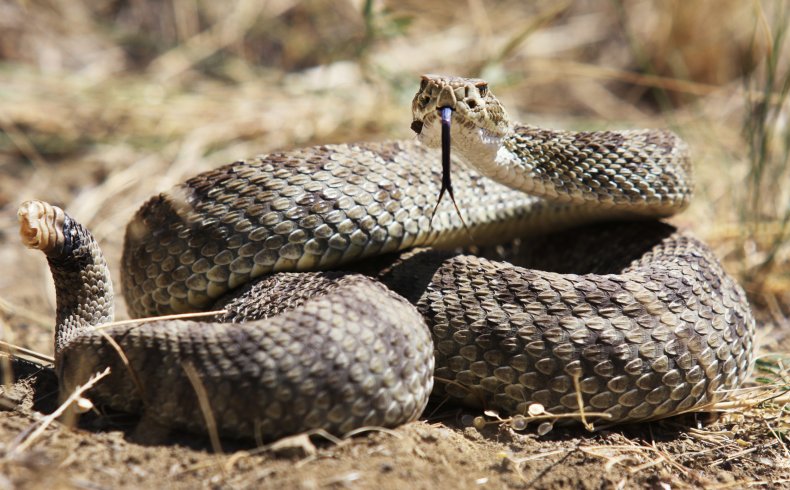A rattlesnake has bitten a 7-year-old in California, sparking a helicopter rescue.
The boy had been hiking through California's Mount Diablo State Park on June 7 with his family when the snake struck, CBS reported.
The family had been walking through long grasses when the snake bit his back leg.
"Basically his mom was right behind him and she was able to take care of him and then brought him down into the parking lot," Cameron Morison, a ranger at the park, told CBS in a statement.
Once he was down, they rushed the boy to hospital by helicopter. After taking a closer look at the bite, they determined it appeared to be a rattlesnake bite.

Rattlesnakes are a highly venomous snake species found in several states of the U.S. Their bites can be incredibly dangerous if left untreated, however fatalities are extremely rare.
Children can be under increased threat from a rattlesnake's venom as they have a weakened immune system.
The exact species of rattlesnake that bit the boy is unknown, but there are seven different types that can be found in California, including the Northern Pacific rattlesnake, the Western diamond-backed rattlesnake and the Mojave Desert sidewinder.
There have so far been no updates on the boy's condition.
The Contra Costa County Fire Protection District issued a statement on its Twitter page following the incident, warning people that snakes are becoming more active.
"With summer weather, we can expect to encounter snakes across the region. Con Fire advises you avoid surprise snake encounters when outdoors," the fire department said, including a graphic offering "tips on snake bite avoidance and safety."
With summer weather, we can expect to encounter snakes across the region. Con Fire advises you avoid surprise snake encounters when outdoors. The graphic below offers tips on snake bite avoidance and safety. You can also visit https://t.co/CGeDRc0cEj for more information. pic.twitter.com/8uzAe5rgxU
— Con Fire PIO (@ContraCostaFire) June 8, 2023
The department advises people to carefully watch where they step in order to avoid stepping on snakes and potentially angering them. It also advises people to stick to trails when hiking, as snakes can often lurk in long grasses.
Rattlesnakes, like other snake species, usually do not attack a human unless they are directly provoked.
And even when they feel threatened, they display several warning signs.
Before they strike, they will usually rattle their tail as a warning for the predator to back off. If the warning goes ignored, it will then strike.
During the warmer summer months, rattlesnakes are more active and often slither into residential areas. This means accidental conflict can occur.
Bites can happen to children as they are more likely to be playing in long grasses—where snakes hide—barefoot. Bites can also happen when a snake is accidentally stepped on.








